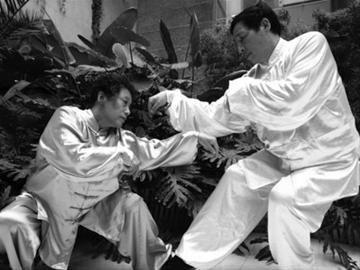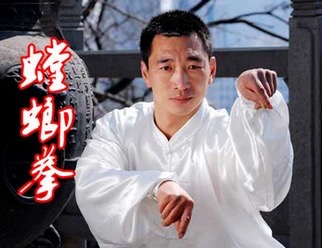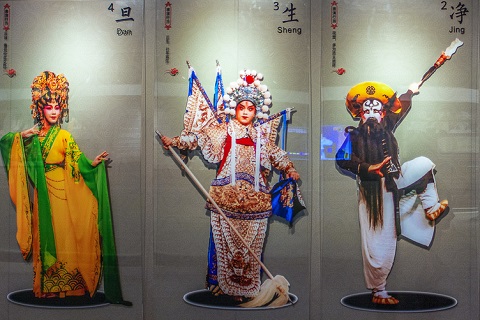Praying Mantis Boxing listed as intangible cultural heritage
Guangdong province has 16 items on the latest list of newly recognized intangible cultural heritages.
The most notable item from Gaungzhou is Praying Mantis Boxing, a famous Chinese version of kung fu.

Two players practice Praying Mantis Boxing. [Photo/Xinhua]
The sixth grouping of intangible cultural heritage was released by Guangzhou's cultural, radio and television departments on April 18. The list aims to preserve local "living cultures" and ensure they are passed down to future generations.
Intangible cultural heritage means the practices, representations, knowledge, skills, instruments, artifacts and cultural spaces associated with these items that communities, groups and, in some cases, individuals recognize as part of their cultural heritage.

A player strikes a typical pose used in Praying Mantis Boxing. [Photo/dayoo.com]
The 16 items on the list all have features unique to Guangzhou. Praying Mantis Boxing can be identified through a performer's unique hand postures, the "praying mantis hook", which looks like the front claws of a praying mantis.
In this style of boxing, short, quick strikes of the hands and continuous movements are common. Quick attacks are characteristic of the praying mantis.
Guangzhou has many schools teaching Praying Mantis Boxing, which was originally created in the Qing Dynasty (1636-1912) by Wang Lang from East China's Shandong province.
Copyright © Foreign Affairs Office of Guangzhou Municipal Government,
Hong Kong and Macao Affairs Office of Guangzhou Municipal Government All rights reserved.
Presented by China Daily.
京ICP备13028878号-28















